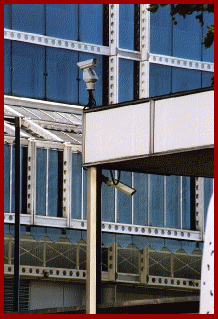| ||||||||||||||||||||||||||||||
Welcome to the | ||||||||||||||||||||||||||||||
 | ||||||||||||||||||||||||||||||
 | ||||||||||||||||||||||||||||||
All you need to know about lenses, | ||||||||||||||||||||||||||||||
Under normal operating conditions, barrel and pin cushion distortions are rarely if ever obvious to the casual observer; however, the more common type of problem to encounter with any CCTV lens (in fact any lens full stop), is lack of centre and edge definition. As Doktor Jon has previously outlined, definition (or ability to resolve detail) is generally inferior on the edges of the lens image, in relation to the centre. As the lens aperture ring (iris) is closed towards the mid scale, definition improves dramatically to reach an optimum value, then begins to reduce again as the lens is further ‘stopped down’. The trick with any lens, is to try and establish where the ‘sweet spot’ is, to achieve the maximum optical performance. You will no doubt also recall that introducing anything into the optical path (such as a Neutral Density (ND) filter inside an auto iris lens) will have a detrimental effect on the lenses overall performance, although in practice, every lens produced will be subtly different. Having considered how the distortions inherent in lens design can prove detrimental to the overall performance of an optic, there is a particular situation where these technical flaws, can be made even more obvious. You may recall that using a ‘relay lens’ which in CCTV circles is known as a “range extender” (in photography it’s called a Tele Converter), you can increase the focal length of a lens by fitting this device between the lens and the camera (range extenders are available in various magnifications, but x2 is the most common so at this stage, we’ll stick to that for our example). Now apart from doubling the focal length, which in turn doubles the magnification, it also has the unenviable side effect of doubling the size of imperfections inherent in the lens design. Whilst a range extender will not work with every lens available, it is however particularly useful on Telephoto lenses, and indeed some 'pinhole' lenses. | ||||||||||||||||||||||||||||||
 | ||||||||||||||||||||||||||||||
IMPORTANT: No material may be reproduced, copied or redistributed from this site, © doktorjon.co.uk 2004 - 2008 Homepage...:...Gateway...:...Technical Gateway....:....Quickfind Index....:....Equipment Directory | ||||||||||||||||||||||||||||||

